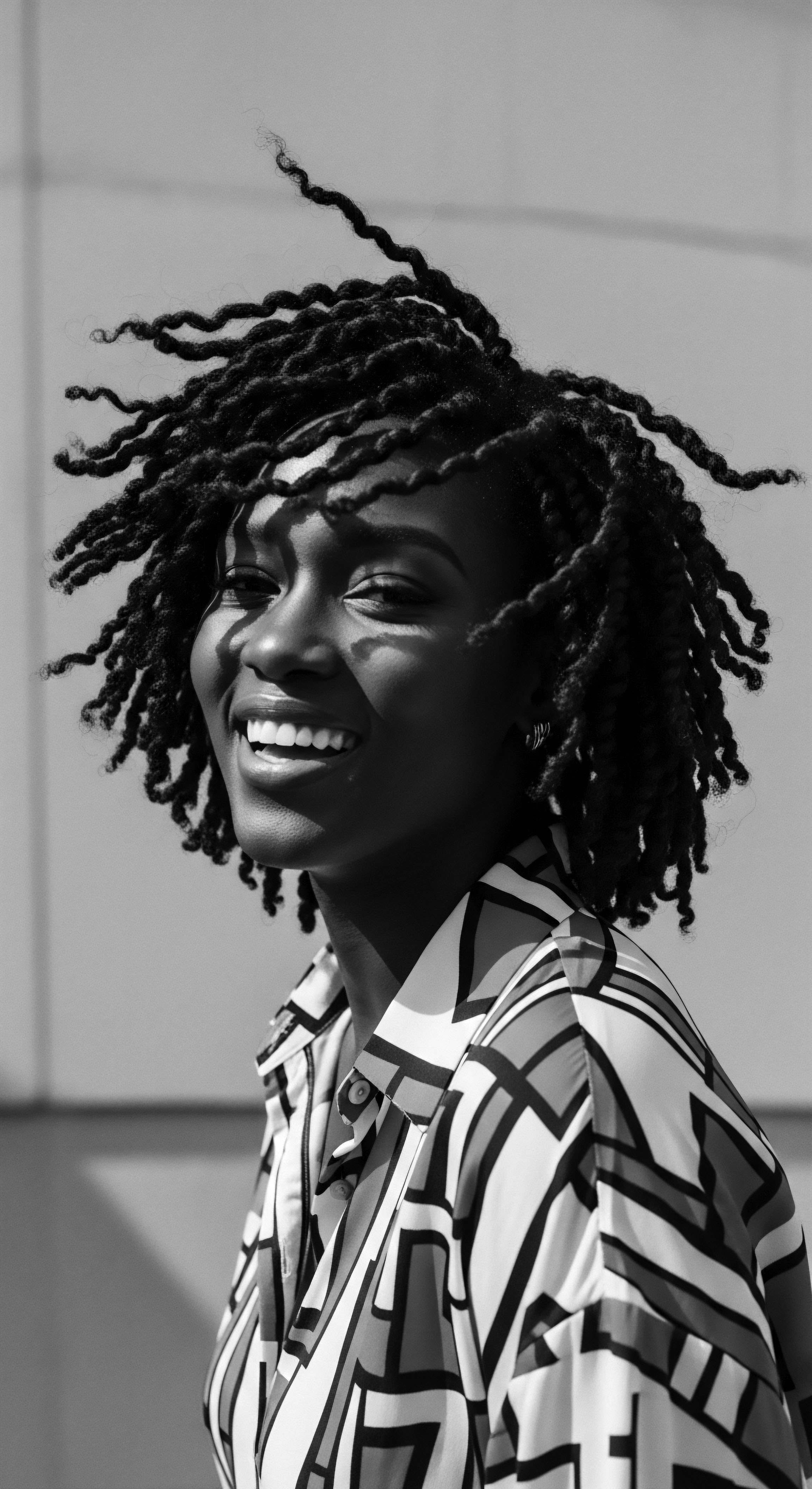
Fundamentals
The spirit of ‘Biocultural Hair Alchemy’ begins with a recognition of our hair as a living archive, a delicate yet resilient part of our inherited being. Its fundamental explanation rests upon the intricate connection between our inherent biological makeup—the very fibers of our hair and the structure of our scalp—and the historical, communal, and environmental forces that have shaped its appearance and care across generations. This is not a detached academic pursuit; rather, it is a soulful inquiry into the essence of our strands, understanding each coil and wave as a testament to journeys both individual and collective.
At its simplest, this concept offers a delineation of how the unique characteristics of textured hair are a product of both genetics and the specific practices developed over time within distinct communities. Our hair’s inherent structure, the particular way melanin distributes itself, and the curl pattern that arises from the elliptical shape of the follicle are all biological facts. Yet, the ways people cared for these distinct textures, the ingredients sourced from the earth, and the styles crafted from these strands, are deeply cultural.
These elements, in constant interplay, establish the initial understanding of Biocultural Hair Alchemy. It is the recognition that our biological inheritance is inseparable from the care traditions passed down through time.
Biocultural Hair Alchemy identifies our hair as a living testament to inherited biology and the profound cultural practices that have shaped its appearance and care through centuries.
Consider the foundational biological truths of textured hair. The scalp, with its countless follicles, acts as the very source of each strand. The unique helical and often flattened cross-section of the hair shaft contributes to its distinctive curl, from loose waves to tightly coiled patterns.
This specific morphology dictates how oils travel down the strand, how moisture is retained or released, and how light reflects upon its surface. This physical composition presents certain needs, demands unique attention, and holds a beauty all its own.
From ancient times, communities of African and mixed heritage learned to honor and respond to these particularities. They observed the hair’s tendency to dryness in arid climates, its susceptibility to breakage, and its remarkable capacity for shrinkage. Through patient observation and communal wisdom, they devised methods of care. These methods were not random; they were responses to biological realities, crafted from the local bounty of nature and refined over countless generations.

The Rooted Beginning ❉ Elemental Biology and Early Care
The initial interpretation of Biocultural Hair Alchemy begins with the sheer reality of hair’s living form. Every strand, emerging from its follicle, carries a biological signature that dictates its curl pattern, thickness, and porosity. For textured hair, this often means a complex, often helical, growth pattern that renders it inherently different from straight hair in its needs and properties. This biological blueprint is an anchor, a constant against which all subsequent cultural developments respond.
Early ancestral communities developed practices for hair care as a direct consequence of the hair’s biological traits and the environmental conditions. Oils extracted from local seeds, butters from indigenous plants, and mineral-rich clays were not simply adornments; they were the first conditioners, cleansers, and fortifiers, serving to protect delicate strands from sun, dust, and breakage. The understanding that certain plants offered slipperiness for detangling or certain fats provided a sealing layer for moisture retention arose from repeated, observant interaction with the natural world and the hair itself.
- Fats and Oils ❉ Sourced from plants like shea, palm, or argan, these were applied to impart flexibility and a protective layer to dry hair.
- Herbal Infusions ❉ Decoctions from leaves, roots, or barks were employed for cleansing, stimulating the scalp, or adding color.
- Clays and Earths ❉ Minerals from the earth were used for purification, detoxification, and even for creating stiff, sculpted styles that held their shape.

Acknowledging Hair’s First Language
Before complex societal structures, hair spoke a language of its own. Its condition could signal health, age, or even environmental distress. The earliest care was a dialogue with this language. A child’s hair, often kept short or in specific styles, marked their youth.
A elder’s hair, perhaps adorned with cowrie shells or specific clays, denoted wisdom and standing. These first expressions of Biocultural Hair Alchemy were simple yet profoundly significant, tying the physical presence of hair directly to a person’s immediate context and status within their community. This primary identification laid the groundwork for the elaborate systems that would later flourish.

Intermediate
Building upon the fundamentals, the intermediate definition of Biocultural Hair Alchemy deepens into the living traditions of care and communal bonds that shaped textured hair. It moves beyond simple biological response to reveal how hair became a profound medium of expression, memory, and communal connection across Black and mixed-race cultures. Here, the ancestral knowledge passed through generations, often through oral tradition and embodied practice, gains further clarity. The tender thread connecting individual hair to collective heritage truly appears.
This stratum of comprehension identifies Biocultural Hair Alchemy as the ongoing dialogue between the inherent characteristics of textured hair and the evolving, yet deeply rooted, cultural practices that have responded to, protected, and celebrated these traits. It is an acknowledgment that the unique structural properties of hair—its density, curl elasticity, and natural propensity for dryness—are not merely biological quirks. Instead, these properties are the very foundation upon which generations crafted sophisticated systems of maintenance, adornment, and identity. These systems, whether involving specific cleansing herbs, nourishing oils, or intricate braiding patterns, represent a profound cultural ingenuity.
At an intermediate level, Biocultural Hair Alchemy unfolds as the dynamic relationship between textured hair’s biological realities and the culturally rich, evolving practices that honor its unique nature and history.

The Tender Thread ❉ Living Traditions of Care and Community
Across the diverse landscapes of Africa and throughout the diaspora, hair traditions became far more than routine grooming. They grew into communal rituals, moments of shared intimacy, and powerful conveyors of cultural meaning. The act of tending to hair, often performed by elders for younger generations, served as a conduit for wisdom, stories, and communal identity. These practices were intrinsically linked to the environment, utilizing indigenous botanicals.
For instance, in parts of West Africa, Shea butter, known for its conditioning abilities, was an indispensable ingredient. Its natural properties aligned perfectly with the hydration needs of highly textured strands. Similarly, various clays and plant extracts were selected not just for perceived efficacy, but for their availability and spiritual connection to the land.
Consider the myriad styles that emerged from these traditions. Beyond their aesthetic appeal, these hairstyles communicated complex social messages. A particular braid pattern might signify marital status, age, tribal affiliation, or readiness for a specific life event.
Such visual communication provided a social grammar, allowing individuals to ‘read’ the hair of others and understand their place within the community. This communal reading underscores how hair became a public declaration of one’s belonging and lineage, a visible extension of one’s heritage.

Ancestral Care ❉ Wisdom from the Land
Ancestral hair care was inherently sustainable and deeply connected to local ecosystems. Communities learned to select ingredients not through scientific analysis as we know it today, but through generations of experiential knowledge. The resilience of hair was supported by ingredients derived from the earth itself.
- Palm Oil ❉ In many West African societies, palm oil was revered not only for its dietary uses but also for its ability to soften and condition hair, protecting it from harsh sun and environmental elements.
- Aloe Vera ❉ Used across various African and diasporic communities, its mucilaginous consistency provided slip for detangling and soothing properties for the scalp.
- Hibiscus Flowers ❉ Infusions from these vibrant blooms were applied to stimulate hair growth and add a natural sheen.
- Baobab Oil ❉ From the majestic ‘tree of life,’ this oil, rich in vitamins and fatty acids, was used to nourish hair and scalp, especially in drier regions.
These ingredients, often harvested with reverence, were not merely applied; they were integrated into rituals that spoke to the sacredness of hair. The communal hair braiding sessions, for example, were often accompanied by storytelling, singing, and the transmission of social norms. Such gatherings fortified bonds within the community, making hair care an act of shared heritage and belonging. The preparation of these materials also held a spiritual dimension, a kind of practical alchemy transforming raw nature into agents of well-being and connection.

Diasporic Adaptations and Enduring Knowledge
The transatlantic crossing forced immense adaptations. Yet, despite systematic attempts to strip enslaved Africans of their cultural markers, hair traditions persisted. Discarded fibers, scraps of fabric, and even stolen grease became tools for survival and resistance.
The cornrow, a style deeply rooted in West African traditions, became a covert map, a means to carry seeds, or a subtle sign of resistance on plantations. This resilience highlights the strength of Biocultural Hair Alchemy ❉ its capacity to survive brutal conditions and maintain spiritual and cultural connections through the manipulation of hair.
The historical experience of Black hair in the diaspora provides striking testimony to this enduring cultural phenomenon. From the painful period of enslavement, where hair was often shaved as an act of dehumanization, to the forced adoption of Eurocentric hair standards through the “hot comb” era, textured hair has consistently been at the center of identity battles. Yet, against all odds, ancestral wisdom, communal care practices, and the deep symbolic value of hair persisted. They shifted, adapted, and sometimes went underground, but they never truly vanished.
This unbroken lineage of care, rooted in the understanding of textured hair’s specific needs and its profound cultural weight, stands as a testament to the ongoing Biocultural Hair Alchemy. It is a living heritage, continuously renewed.
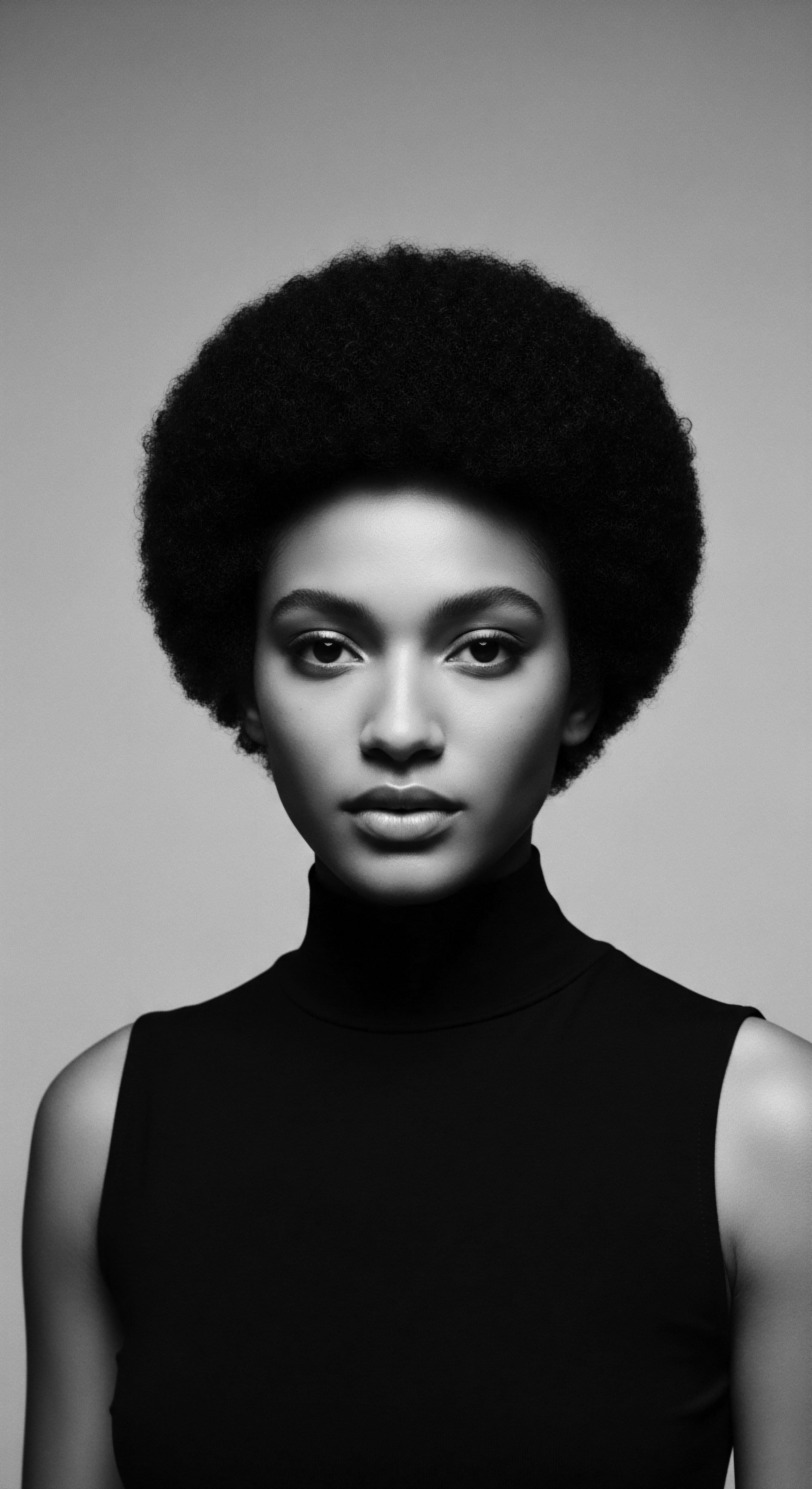
Academic
The academic elucidation of Biocultural Hair Alchemy offers a comprehensive, interdisciplinary statement, positioning it as the dynamic, co-evolutionary interaction between the inherent biological specificities of textured hair—including its genetic predispositions, follicular morphology, and micro-environmental adaptations—and the culturally constructed, historically transmitted practices of care, adornment, and identity formation within communities of African and mixed heritage. This scholarly delineation recognizes that hair is not a static biological appendage nor a mere canvas for aesthetic expression. Rather, it stands as a living biorepository, carrying genetic codes, responding to epigenetic shifts, and serving as a profound somatic marker of lineage, resilience, and resistance across the human experience. This interpretation draws upon fields ranging from anthropology, molecular biology, and ethno-botany to cultural studies, history, and psychology, revealing a complex, interconnected system where the physical and the cultural are inextricably linked.
The meaning of Biocultural Hair Alchemy extends to acknowledging how the unique characteristics of textured hair—its tightly coiled helix, its lower density of follicles, and its propensity for dryness due to inefficient sebum distribution along the twists of the strand—are not deficiencies but rather distinct biological blueprints that necessitate specialized approaches to care. These biological realities are met by ancestral systems of knowledge that developed specific techniques, tools, and botanical resources to maintain health and facilitate growth. This interplay is not merely reactive; it represents an active cultural dialogue with genetic inheritance, where cultural ingenuity has shaped the long-term well-being and appearance of textured hair. This deep analytical perspective helps in grasping the full import of these practices.
Biocultural Hair Alchemy comprehensively describes the co-evolution of textured hair’s biological traits with the culturally transmitted practices that sustain its health and symbolize identity across generations.

Echoes from the Source ❉ Genetic Lineage and Environmental Response
The very architecture of textured hair stems from genetic variations that influence the shape of the follicle. An elliptical follicle produces hair with a flattened cross-section, leading to curls, coils, and kinks of varying degrees. This biological blueprint, passed down through generations, is the initial ‘source’ from which Biocultural Hair Alchemy springs. Beyond genetics, however, environmental factors and epigenetic influences also play a role.
Climate, diet, and even stress can influence hair health and appearance over a lifetime, subtly altering the expression of inherited traits. For instance, ancestral diets rich in specific nutrients found in local flora and fauna would have contributed to the strength and vitality of hair, demonstrating a direct biological link between environment, nutrition, and hair wellness.
Moreover, the hair strand itself can be a record of physiological states. Hair cortisol levels, for example, can indicate prolonged stress, demonstrating a measurable biological response to lived experience. The stress of historical oppression, while not directly altering hair texture genetically, certainly impacted the overall health and growth cycles of individuals, becoming a part of the lived experience that informed the enduring cultural practices of care and protection. These practices became a form of survival and a testament to resilience, a physical manifestation of communal healing.
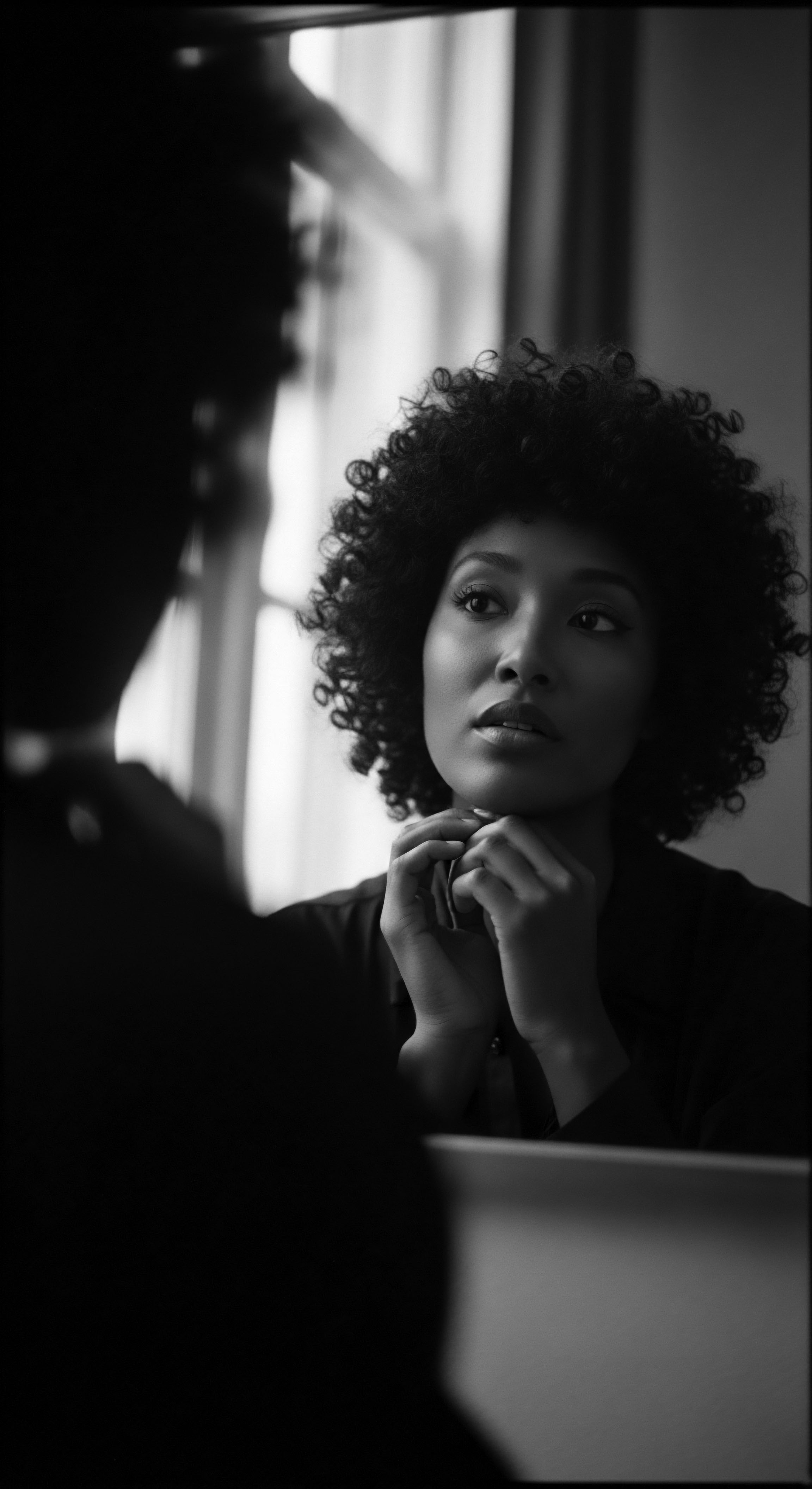
The Unbound Helix ❉ Hair as a Voice of Identity and Shaping Futures
The understanding of Biocultural Hair Alchemy attains its profoundest statement when we examine how hair transcends its biological form to become a potent symbol of identity, social structure, and even resistance. This is particularly evident in the historical and ongoing experiences of communities with textured hair. Hair, having absorbed countless stories of endurance, transformation, and self-definition, becomes a living testament to ancestral memory and a marker for future aspirations.
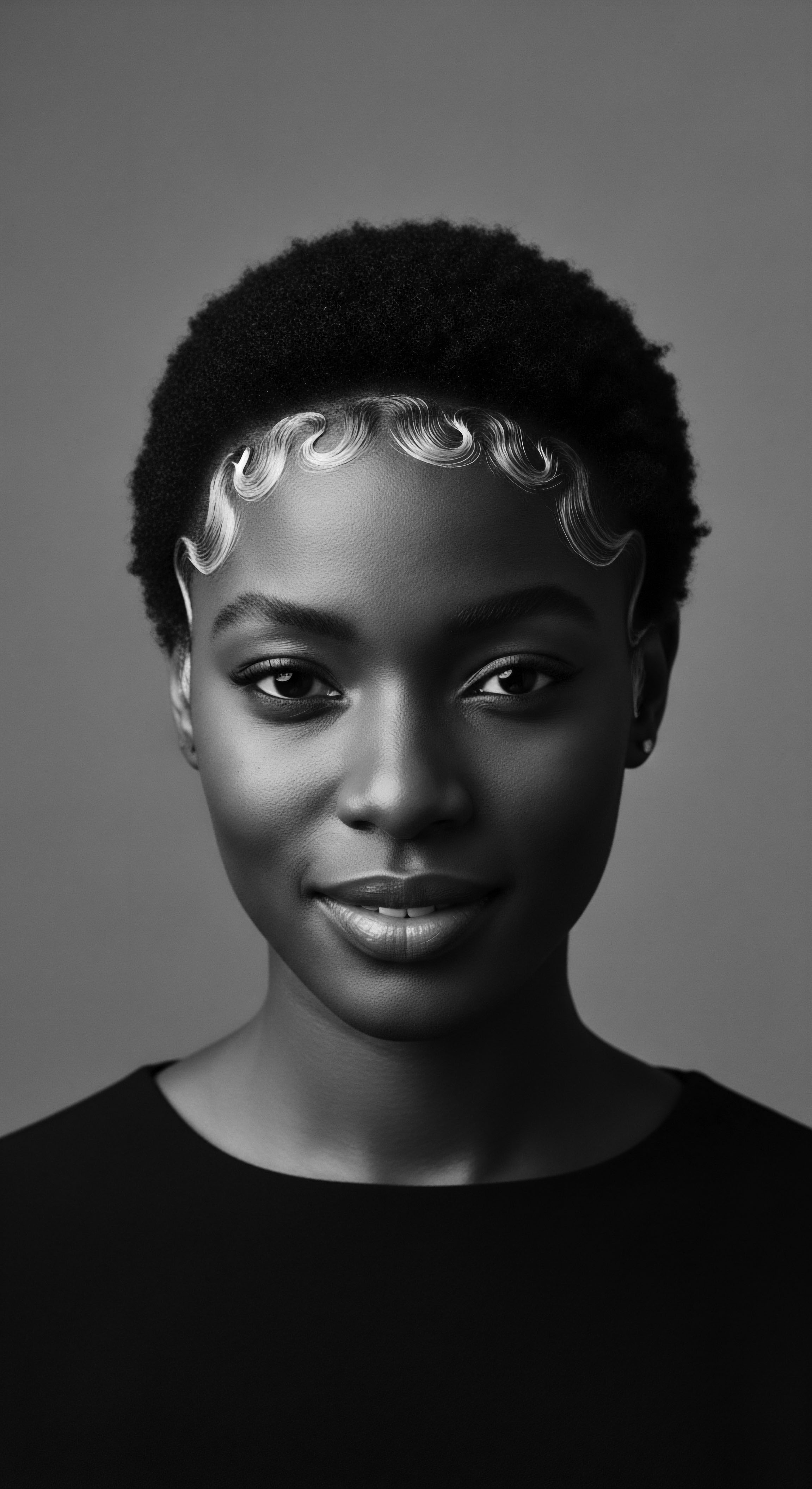
The Meroitic Queens ❉ Hair as Divine Authority and Cultural Distinctiveness
A compelling instance of Biocultural Hair Alchemy’s profound depth can be found in the ancient Kingdom of Kush, particularly through the depictions of its powerful female rulers, the Kandakes of Meroë. Unlike their Egyptian counterparts, who often adopted masculine iconography to assert royal authority, Meroitic queens presented themselves in art and sculpture with their distinctively textured hair, often styled in elaborate coiffures, adorned with symbols of their divine and earthly power. This choice was not merely a matter of aesthetic preference; it was a deliberate articulation of their sovereignty and a celebration of a uniquely Nubian cultural identity (Wenig, 1978).
The complex braided and plaited hairstyles seen on reliefs and statues of figures like Queen Amanishakheto are not simply beautiful; they represent a conscious decision to anchor power in an authentic feminine and ethnic expression. While ancient Egyptian pharaohs like Hatshepsut presented themselves with male characteristics to legitimize their rule, the Kandakes chose to affirm their authority through their inherent female form and the specific presentation of their textured hair. This divergence underscores a fundamental aspect of Meroitic cultural values, where female leadership was not merely tolerated but celebrated in its own right, and hair served as a central visual cue for this distinct societal order.
The styles themselves, often featuring tightly bound rows or dense curls, reflected a deep connection to indigenous hair textures and a preference for natural hair forms. This choice solidified hair as a visual language of divine authority and cultural continuity.
| Aspect of Symbolism Hair Representation |
| Meroitic Queens (Kandakes) Often depicted with natural, elaborately styled textured hair, braids, and curls. |
| Ancient Egyptian Pharaohs (e.g. Hatshepsut) Wore elaborate wigs; female pharaohs like Hatshepsut often adopted male iconography, including false beards. |
| Aspect of Symbolism Source of Authority |
| Meroitic Queens (Kandakes) Derived from inherent female power, often associated with warrior deities, expressed through authentic appearance. |
| Ancient Egyptian Pharaohs (e.g. Hatshepsut) Derived from kingly tradition, often necessitating adoption of male attributes to legitimize rule. |
| Aspect of Symbolism Cultural Identity |
| Meroitic Queens (Kandakes) Celebration of unique Nubian identity, valuing inherent hair texture as a marker of self. |
| Ancient Egyptian Pharaohs (e.g. Hatshepsut) Conformity to established Egyptian royal iconography, which could override personal or gendered appearance for symbolic purposes. |
| Aspect of Symbolism The distinct approaches to royal hair in Meroë and Egypt illuminate the deep cultural layers within Biocultural Hair Alchemy, showcasing hair as a powerful medium for expressing sovereign power and unique cultural identity. |
The example of Meroitic queens demonstrates a clear historical instance where biological hair texture, cultural values, and expressions of power converged. It reveals that the treatment and presentation of hair were never superficial but deeply interwoven with social, political, and spiritual realities. These traditions provided a physical manifestation of heritage, a visible link to ancestral identity, and a potent symbol of a distinct cultural legacy that held its own ground against the influence of powerful neighbors.

The Legacy of Resilience ❉ Hair Through the Diaspora
The transatlantic slave trade sought to dismantle every aspect of African identity, including hair. Heads were shaved upon arrival in the Americas, a brutal act aimed at stripping individuals of their previous social standing, spiritual connection, and tribal belonging. Yet, the alchemy persisted. Despite unimaginable suffering, enslaved Africans found ways to reclaim and adapt hair practices.
Hidden seeds were braided into hair to ensure survival upon escape, and intricate patterns became secret maps for freedom. This period showcases hair as a tool of covert communication and defiant self-preservation.
Later, as communities rebuilt in the Americas, hair became a battleground against Eurocentric beauty standards. The advent of chemical straighteners and hot combs reflected societal pressures to conform, yet also a fierce determination to adapt and survive within new cultural landscapes. The “good hair” versus “bad hair” dichotomy, though damaging, only served to underscore hair’s immense cultural weight and its central role in shaping self-perception within the diaspora.
The twentieth century brought movements that celebrated natural hair, like the “Black Is Beautiful” era, reigniting an open dialogue with ancestral practices. The afro, braids, and locs became powerful declarations of identity, pride, and political statement. These styles were not merely fashion; they were a collective reclaiming of heritage, a visual rejection of oppressive beauty norms, and a profound assertion of cultural worth. This shift in the public acceptance and widespread adoption of natural hair reflects a deepening of the Biocultural Hair Alchemy, moving from subtle resistance to overt celebration.
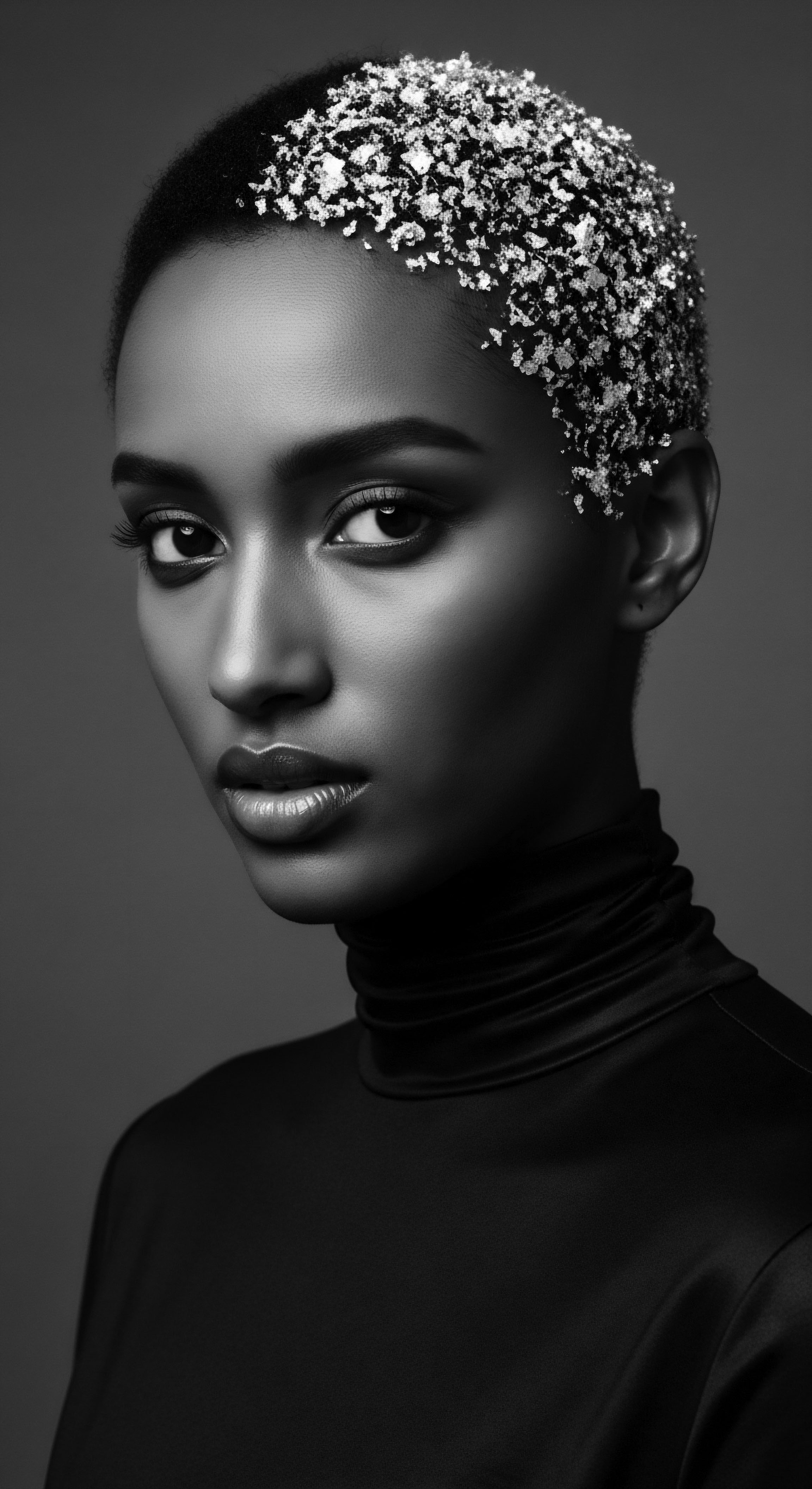
Modern Science Affirming Ancient Wisdom
Contemporary scientific inquiry often finds itself affirming the wisdom embedded in ancestral hair care. For instance, the traditional use of natural oils like coconut, jojoba, or argan for conditioning textured hair aligns with modern understanding of their molecular structure and ability to penetrate or seal the hair shaft. Practices such as protective styling—braids, twists, and locs—reduce manipulation, minimizing breakage and supporting length retention, a principle now championed by trichologists.
The understanding of scalp health in traditional practices, often involving gentle massages and herbal rinses, predates modern dermatology but aligns with principles of stimulating blood flow and maintaining a balanced microbiome. The emphasis on moisture, a recurring theme in ancestral care, is now scientifically validated as essential for the elasticity and strength of textured hair. This convergence of ancient wisdom and contemporary understanding highlights the enduring power of Biocultural Hair Alchemy. It proves that knowledge, even if passed down through generations in a non-formalized way, can contain profound truths about hair’s biology and needs.
- Hair Porosity ❉ Textured hair often exhibits higher porosity, leading to faster moisture loss. Ancestral solutions, such as layering natural oils and butters, created barriers against this loss.
- Scalp Microbiome ❉ Traditional herbal rinses and scalp massages, believed to promote spiritual purity, also contributed to a healthy scalp environment, now recognized as a key element of hair growth.
- Mechanical Stress ❉ Protective styles inherently reduce the physical stress on fragile textured strands, minimizing breakage, a practice long understood by those who wore and created these styles.

The Communal Aspect ❉ Shared Knowledge and Identity
The communal dimension of Biocultural Hair Alchemy is paramount. Hair care in many African and diasporic communities was, and remains, a collective activity. Hair braiding sessions, in particular, were often intimate gatherings where stories were exchanged, history was recounted, and life lessons were shared.
These moments transmitted more than just styling techniques; they passed on cultural values, resilience strategies, and a sense of belonging. The very act of hands moving through hair, of shared laughter and quiet conversations, forged a deep connection to ancestry and community.
This shared experience meant that knowledge about hair was not merely individual but a collective asset. Innovations in styling or care practices were often disseminated orally, through observation, and through practice within these communal settings. This collective intelligence ensured the survival and evolution of these traditions, adapting them to new environments and challenges while retaining their fundamental reverence for hair. The continuity of these practices, even in the face of adversity, is a testament to the strength of this shared heritage.
The Biocultural Hair Alchemy, therefore, is an ever-present, dynamic process. It acknowledges the physical reality of textured hair, the environmental influences upon it, the ancestral practices developed to care for it, and the deep cultural, spiritual, and political meanings attached to it. It is a lens through which we can truly appreciate the resilience, adaptability, and profound beauty of textured hair and the communities that wear it with such honor and history. This profound understanding allows us to appreciate the continuum of care and identity.

Reflection on the Heritage of Biocultural Hair Alchemy
As we stand at the nexus of ancestral wisdom and contemporary scientific discovery, the journey into Biocultural Hair Alchemy offers a profound consideration of textured hair. This concept reveals hair as far more than just a biological extension; it is a profound historical document, a living testament to journeys spanning continents and centuries. Each coil and curl whispers stories of resilience, of adaptation, and of an unbreakable spirit that transformed hardship into enduring cultural practices. It is a living, breathing archive, not merely of biological markers, but of the very heritage that defines us.
The care rituals, the styles, the very language we use to describe textured hair today, echo with the ingenuity and fortitude of those who came before us. From the protective coiffures of ancient Meroitic queens that spoke of divine power and distinct identity, to the intricate braided messages exchanged during periods of forced migration, hair has consistently served as a conduit for memory, a banner for communal belonging, and a declaration of self. It speaks to a continuous conversation between past and present, where the wisdom of ancestors shapes the health and celebration of hair today. This unbroken lineage of care is a source of immense pride.
Embracing Biocultural Hair Alchemy means acknowledging the deep historical and cultural layers that reside within every strand. It means approaching textured hair not with a deficit mindset, but with reverence for its inherent biological strength and the vast wealth of knowledge that has surrounded its care for millennia. This understanding invites us to connect with our hair in a deeper, more meaningful way, seeing it as a sacred part of our being, a direct link to our lineage, and a canvas for expressing our unique heritage.
The future of textured hair care, informed by this profound understanding, holds the promise of true liberation. It is a future where science validates ancestral wisdom, where beauty standards are self-defined and diverse, and where every individual can honor their hair’s unique story without compromise. This ongoing journey, much like the helical path of a coiling strand, continually returns to its origins, drawing strength and inspiration from the rich soil of heritage, ever reaching towards an unbound future. The Soul of a Strand truly carries generations of meaning.
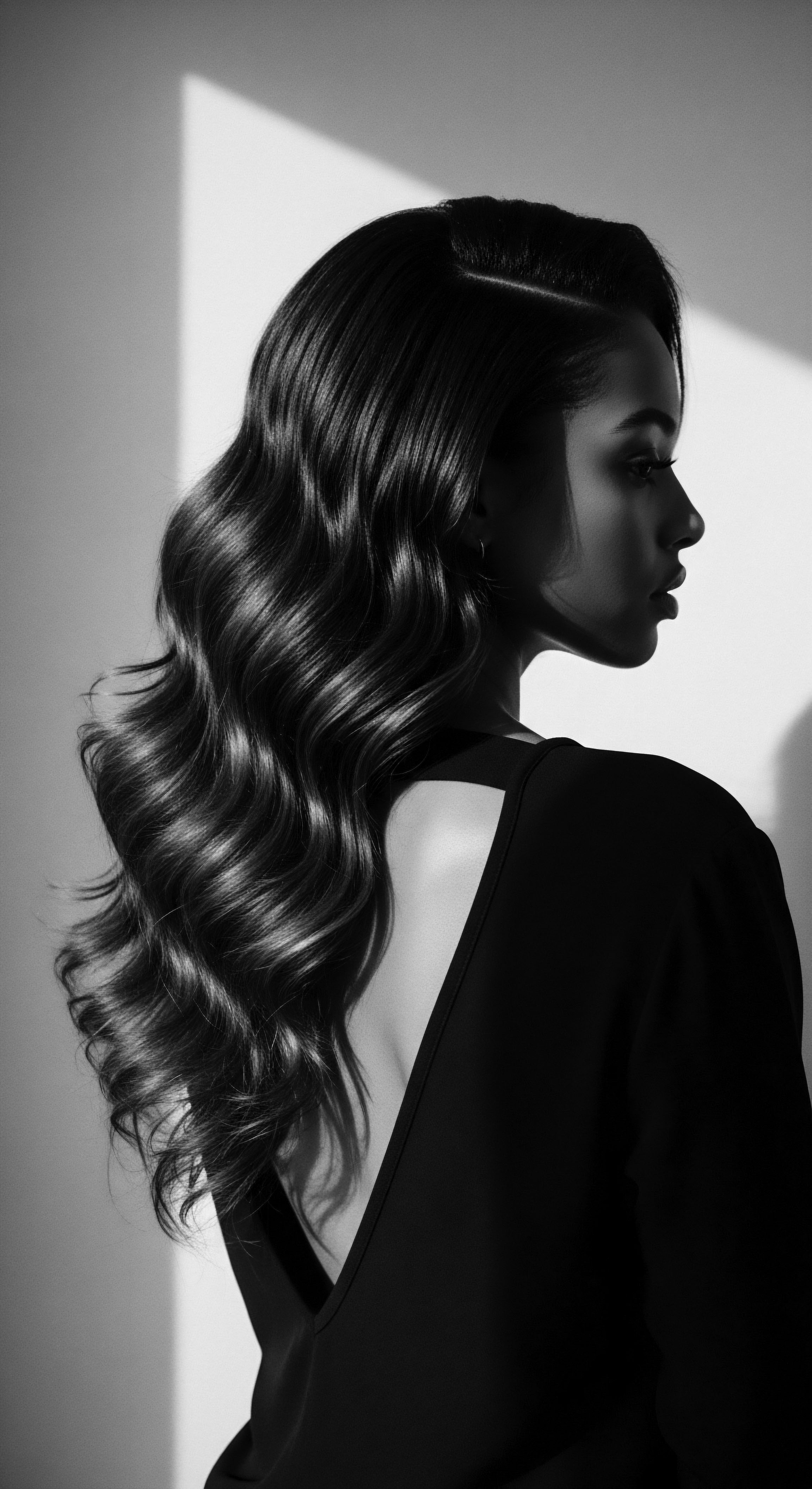
References
- Byrd, A. & Tharps, L. (2014). Hair Story ❉ Untangling the Roots of Black Hair in America. St. Martin’s Griffin.
- Gordon, M. (2009). The History of African Hair. Journal of Pan African Studies.
- Matić, U. (2018). Gender as Frame of War in Ancient Nubia. eScholarship.org.
- Omotos, A. (2018). The Significance of Hair in Ancient African Civilizations. Journal of Pan African Studies.
- Török, L. (1990). The Kingdom of Kush ❉ Handbook of the Napatan-Meroitic Civilization. Brill.
- Wenig, S. (1978). The Woman in Meroitic Art. Akademie Verlag.
- Withers, A. (2015). Persistence of the Spirit ❉ Kongo and Conjure in the Antebellum South Carolina Lowcountry. University of California, Los Angeles.
